The European Organization for Nuclear Research (CERN), located at the border of France and Switzerland, is currently the largest particle physics laboratory in the world. At first glance, CERN’s antimatter factory appears modest when viewed from the outside. Many might think it isn’t the place where antimatter, the most powerful explosive material in the universe and the most expensive substance on Earth, is produced.
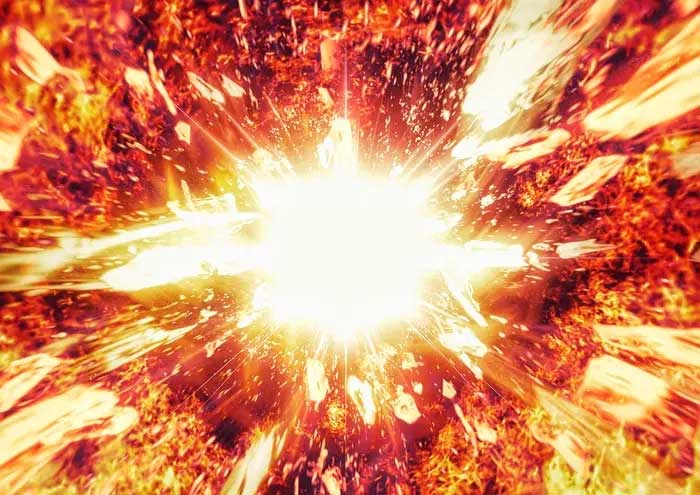
According to scientists, antimatter is made up of elementary particles similar to ordinary matter, but with opposite electric charges.
When these two types of particles interact, they annihilate each other and convert into energy. In fact, just 1 gram of antimatter could produce an explosion equivalent to that of a nuclear bomb.
Theoretically, the Big Bang created matter and antimatter in equal amounts, which should have led to the complete annihilation of these two particle types. However, we find ourselves living in a universe almost entirely composed of ordinary matter.
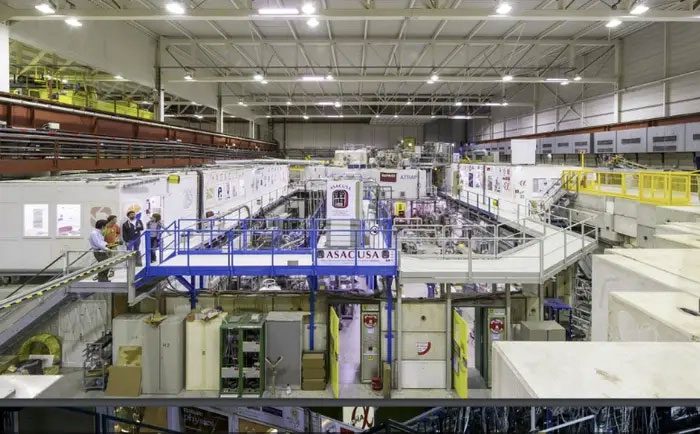
At CERN’s antimatter factory, physicists have created antiprotons and antihydrogen to study their properties and help answer fundamental questions about the origins of the universe.
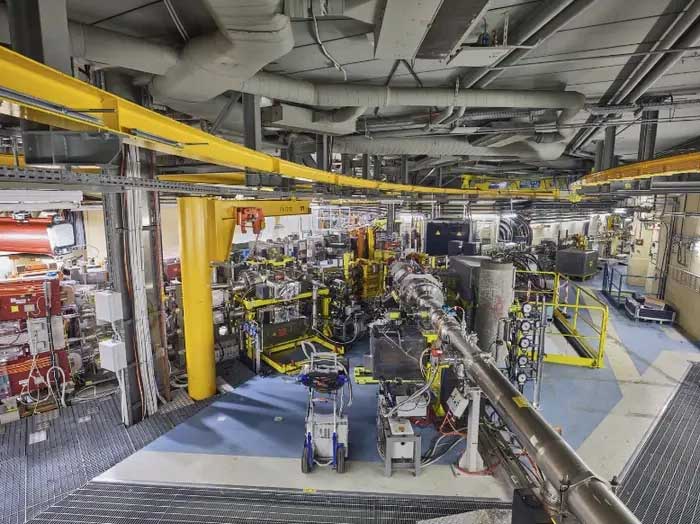
To create antimatter, physicists start with the Proton Synchrotron.
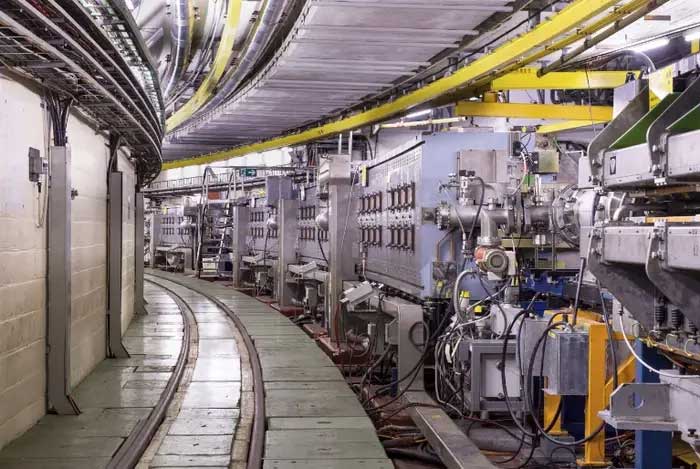
This machine accelerates the particle beam along a circular path of about 628 meters, causing them to collide with a structure primarily made of the chemical element iridium. Next, this proton beam interacts with iridium and produces about four antiprotons after a million collisions. However, these antimatter particles still have a long journey ahead.
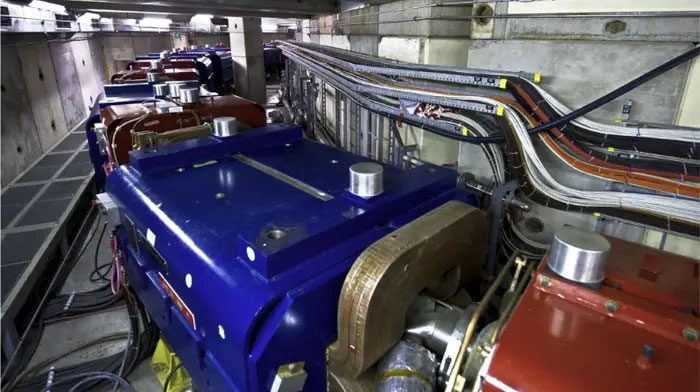
Specifically, the antiprotons carrying chaotic energy then enter the antiproton decelerator. They use strong magnets (in blue) to slow down the antiprotons while guiding them along the machine’s circular path.
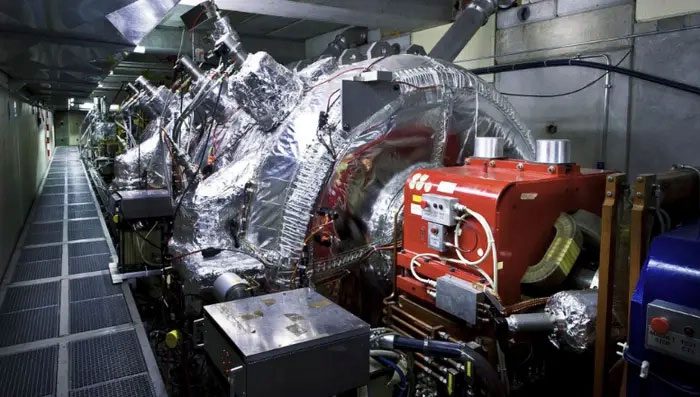
The antiprotons will pass through four-pole magnets (in red) and be compressed. This is contrary to their natural tendency to repel each other.
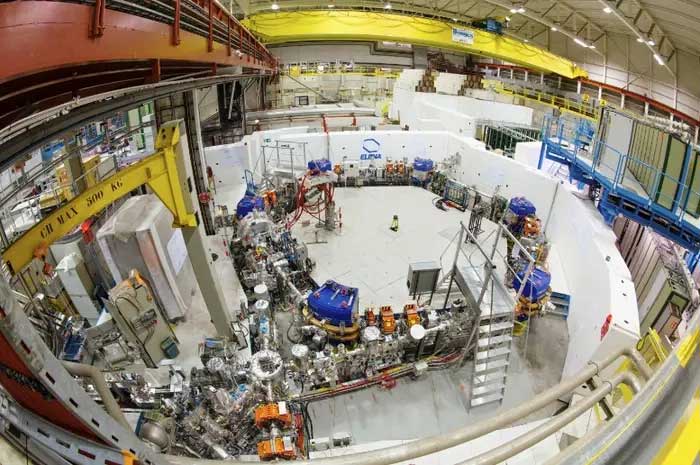
Specifically, the low-energy antiproton ring slows the antiprotons down to about 1.5% of the speed of light. This allows physicists to retain the antimatter particles.
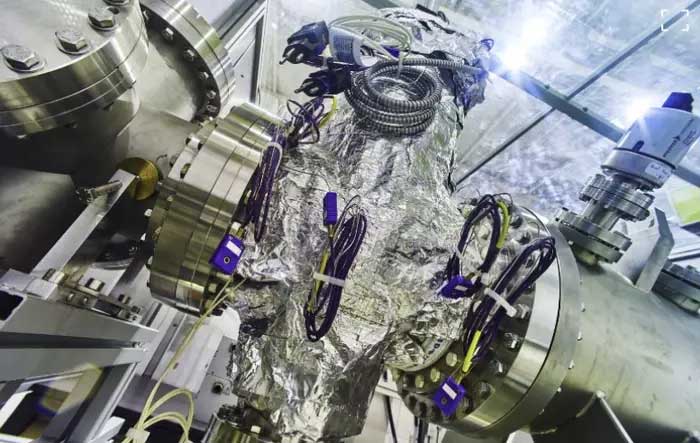
Furthermore, one of the final stages of the antimatter production process involves a vacuum chamber. Any antimatter would be annihilated if it comes into contact with ordinary matter. This vacuum chamber is heated to about 250 degrees Celsius to remove gas and moisture, creating an almost perfect vacuum environment inside.
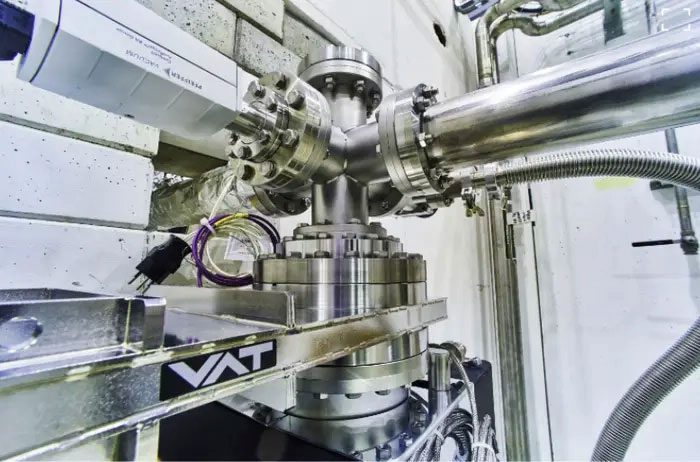
This is a device used to measure pressure, monitoring vacuum conditions to prevent matter and antimatter from coming into contact with each other.
However, even without contact between matter and antimatter, these experiments still produce such small amounts that it would take 10 trillion years to create 25 grams of antimatter. Theoretically, this is just the amount needed for an antimatter bomb.
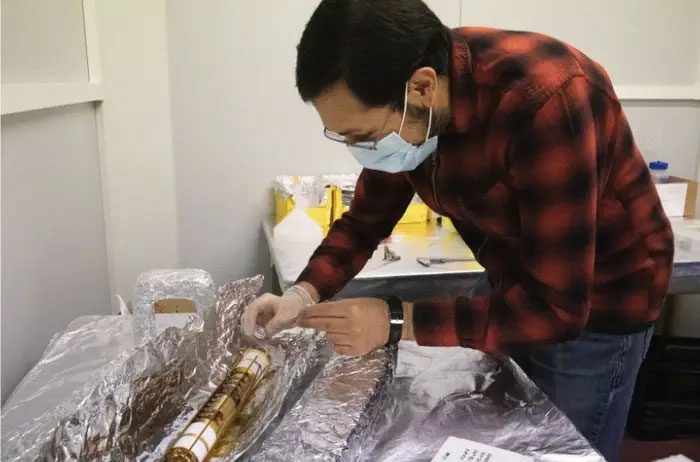
In this image, the neutron trap is cooled to near 0 degrees Celsius and uses vacuum and magnetic fields to “trap” the antimatter of protons and electrons, forming antihydrogen.
In fact, the neutron trap at CERN’s antimatter factory contains ultra-thin foil, about 1.5 micrometers thick, which serves to slow down and collect the antiprotons transmitted from the ELENA ring. Before the installation of ELENA in 2018 aimed at slowing down antiprotons, CERN had collected less than 1% of antiprotons. However, today, the number of antiprotons collected by this organization is 70%.
Next, after being slowed down by ELENA, the antiprotons will move on to other experiments within this antimatter factory. For instance, the AEgIS experiment utilizes a “trap” producing antihydrogen with strong magnetic fields on each side to capture antimatter. Then, physicists will observe the effects of gravity on them.
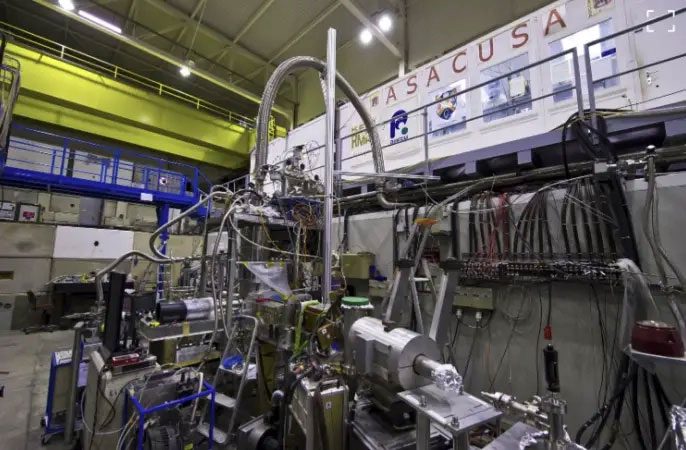
This is another experiment called ASACUSA to test whether antiprotons have the same mass as ordinary protons.
In the ALPHA experiment area, superconducting magnets filled with liquid helium help “trap” the antiparticles. Previously, in 2011, the ALPHA experiment at CERN successfully stored 309 antihydrogen atoms, with some atoms remaining for nearly 17 minutes.
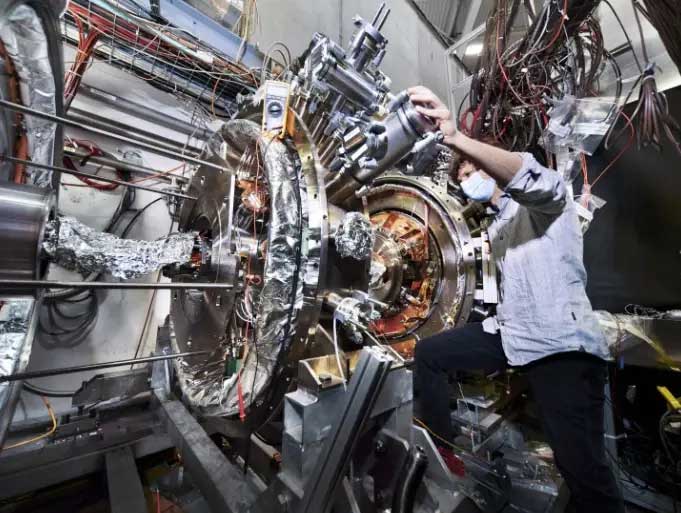
A person is checking equipment in CERN’s facility.
However, the reality is that antimatter remains an extremely expensive material and its production is highly inefficient.
According to experts, the cost of producing one gram of antimatter is estimated to be around 62.5 trillion USD. This is also the reason CERN can only produce a very limited amount of antimatter. Specifically, since starting to create antimatter in 1995, this organization has produced less than 10 nanograms of antimatter. Although they have produced a very small amount, researchers are still “scratching their heads” looking for ways to store antimatter.


















































